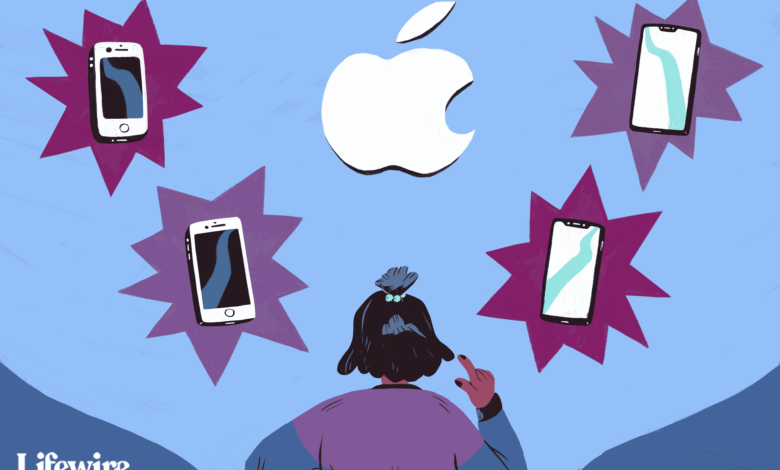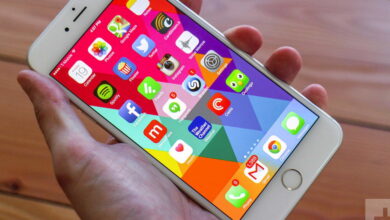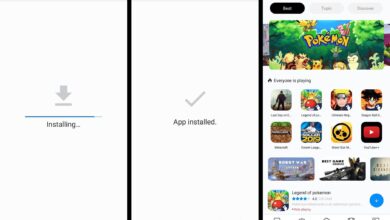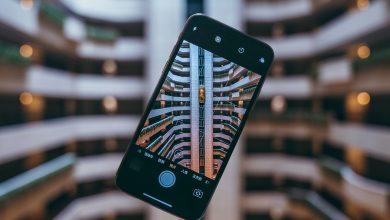
Figuring out which is the best iPhone for you can be complicated.
Buying a new iPhone means choosing from six current models (iPhone 11 Pro and Pro Max, iPhone 11, iPhone XR, and iPhone 8 and 8 Plus), multiple storage capacities, different features, and very different prices. You need to know if you want to use Face ID or whether all you care about is Animojis. Maybe the most important thing to you getting the biggest screen possible or the best camera. There’s a lot to figure out!
If you’re planning to buy a new iPhone, you need to figure out what matters to you and what doesn’t. Here is some information about each model that makes picking the best iPhone for you a little easier.
Contents
iPhone 11 Pro and Pro Max
Why They Might Be the Best iPhone For You:
- The bleeding edge: If having the coolest, most cutting-edge technology matters to you, the iPhone 11 Pro series is your only choice. They’re the only current iPhones that offer an edge-to-edge OLED, HDR screen, a top-of-the-line three-camera system, and enhanced IP68 waterproofing.
- The biggest and the best: The iPhone 11 Pro is the top of the line model. It’s got the largest screen — 5.8 inches on the 11 Pro, 6.5 inches on the 11 Pro Max — which makes for terrific gaming and multimedia.
- The best screen: While all models of the iPhone 11 and the XR have an edge-to-edge screen that covers the full face of the phone, only the two 11 Pro models use superior OLED technology, and delivers highly detailed, vibrantly colorful HDR images. The iPhone 11 and XR’s screen is edge-to-edge, but uses a different technology and doesn’t offer the other features.
- The best camera: The user-facing camera on all three iPhone 11 models may be the same, but the back cameras are pretty different. While all three iPhone 11 models offer 12-megapixel resolution, only the 11 Pro and 11 Pro Max sport wide-angle, ultra-wide-angle, and telephoto lenses, optical zoom and optical image stabilization, and up to 10x digital zoom. They also have three Portrait Lighting options that the iPhone XR doesn’t.
- Face ID: Both iPhone 11 Pro models use the next-generation Face ID recognition system for unlocking the iPhone and confirming Apple Pay transactions. The 11 and XR also have this feature.
- Wireless Charging: All current iPhone models sport wireless charging using the Qi standard. Forget plugging in your iPhone; just place it on a charging mat to top up the battery.
- Most storage: Only the iPhone 11 Pro models offer up to 512 GB of storage. The most any other model offers is 256 GB (on the standard iPhone 11).
- NFC & Apple Pay: The 11 Pro series includes support for NFC (Near-Field Communication), the wireless standard that is used for transactions with Apple Pay. All other iPhones on this list support Apple Pay, too.
- Newer processors: The latest, fastest chips show up in the iPhone 11 Pro (and standard iPhone 11). The A13 Bionic chip offers notably faster performance than the chip in the previous-generation iPhone XS.
- Apple Watch and AirPods compatible: Every phone on this list works with all generations of the Apple Watch and Apple’s wireless AirPods earbuds, including the AirPods Pro.
- Size and Weight: Despite having a screen that’s more than an inch bigger than the screen on the iPhone 8, the iPhone 11 Pro is only 0.22 inches taller and 0.16 inches wider. The 11 Pro is also just 1.41 ounces heavier than the 8.
Cons
- Premium price: All these amazing features don’t come cheap. The iPhone 11 Pro series equal the iPhone X and XS as the most expensive iPhones ever. The 11 Pros start at US$999 for the 64 GB iPhone 11 Pro and top out at $1,449 for the 512 GB iPhone 11 Pro Max.
iPhone 11
Why It Might Be the Best iPhone For You:
- Almost all of the iPhone 11 Pro’s features: The iPhone 11 delivers almost all of the features that the 11 Pro series offers. Check out the cons section below for a full run-down of the differences, but the 11 and the 11 Pro are close enough that most people will be thrilled with what the 11 offers.
- More appealing prices: Maybe the most appealing aspect of the 11 when compared to the 11 Pro is the price. The entry-level 64GB iPhone 11 costs just $699, compared to $999 for the entry-level 11 Pro, while the highest price is $849. That’s $600 less than the top-of-the-line iPhone 11 Pro Max. Those are major savings.
Cons
- Different Screen: The trade-off for the lower prices of the iPhone 11 is that of its core features aren’t quite as premium as the equivalent elements of the 11 Pro series. The first of these differences is the technology used to create the screen. While the 11 offers a big, bright, beautiful screen, it uses older LCD technology, doesn’t support HDR, and has a smaller color gamut. The difference may not make a huge difference for most people, but it’s noticeable when comparing the models.
- Only Two Cameras: All three iPhone 11 models have the same user-facing camera system, but the back cameras are different. Unlike the three-camera system on the the 11 Pro, the standard iPhone 11 has two back cameras. It omits the ultra-wide angle lens and maxes out at 5x zoom. Even still, it’s likely to be the best camera most people have ever owned.
- Lower Maximum Storage: The standard iPhone 11 maxes out at 256GB of storage, compared to 512GB for the 11 Pros.
- Lesser Waterproofing: The 11 is waterproofed to survive up to 30 minutes submerged in up to 2 meters of water. The 11 Pros, on the other hand, can survive the same amount of time in up to 4 meters.
iPhone XR
The iPhone XR offers compelling features at a lower price than the XS.
Why It Might Be the Best iPhone For You:
- Big, bright screen: While the iPhone XR doesn’t have the 11 Pro’s True Tone, OLED screen, its screen is still terrific. The XR’s 6.1-inch, edge-to-edge LCD is plenty big and looks great.
- Battery life: The battery on the XR outperforms its predecessor, the XS, by a few hours.
- Attractive price: The XR offers many of the standard iPhone 11’s key features for a cheaper price. You can get an XR that’s somewhat similar to the 11 starting at just $599.
- Very good cameras: The cameras on the XR are one generation behind those on the 11 series, but they’re still very good. The key difference here is that the XR has only a single camera on the back, so it lacks the ultra-wide and telephoto lenses, as well as some image stabilization and zoom features.
- Most key iPhone 11 features: In many ways, the XR is very similar to the 11. It sports the same Face ID, the same wireless charging options, and other features. Unless you absolutely need the latest, top of the line features, the XR delivers a lot of what makes the 11 great, but at a lower price.
Cons
- LCD screen: The LCD screen used on the XR isn’t quite as good as the OLED on the 11 Pro series. The technology used in this screen has a lower color range and accuracy, and isn’t quite as bright. The average user may not notice the difference, though.
- Lower maximum storage: The XR’s storage maxes out at 256 GB, while the 11 Pro goes up to 512 GB. So, if you need a tremendous amount of storage on your phone, you may encounter some limits with the XR.
- Heavier: The body of the XR is made from different materials than the 11, so it’s a bit heavier. The XR weighs 6.84 ounces, slightly heavier than the 6.62-ounce iPhone 11 Pro. It’s the same weight as the standard iPhone 11, though.
- Lesser waterproofing: The waterproofing features of the XR are slightly less effective than on the 11. While the iPhone 11 can survive 30 minutes in water up to 2 meters deep, the XR can only last 30 minutes in 1 meter of water.
iPhone 8 Plus
Why It Might Be the Best iPhone For You:
- Pretty close to the iPhone XR: The iPhone 8 Plus and iPhone XR are similar in many important ways. Many things in the list above applies to both the XR and the 8 Plus. See the cons section below for the few things that don’t.
- Touch ID: Apple’s 2nd generation fingerprint scanning technology is built into the 8 series, so entering passwords and making purchases is as simple as pressing your phone’s Home button. There’s no Face ID on either iPhone 8 model, though.
- Less expensive: Buying an iPhone 8 Plus is easier on your wallet. The introductory 64 GB model costs $549, $50 less than the equivalent iPhone XR. That’s not a big savings, but the $350 difference when compared to the 11 Pro is substantial.
Cons
- No Face ID: The iPhone 8 series uses Touch ID, rather than Face ID. You can’t get facial recognition and everything that goes along with it (including Animojis) on the 8 Plus.
- Lesser screen: While the 8 Plus’s Retina Display screen is amazing, it’s not as good as the screen on the 11 Pro. It doesn’t use OLED, isn’t edge to edge, and doesn’t support HDR. The 8 Plus also has a 5.5-inch screen, compared to the 5.8-inch screen on the 11 Pro, the 6.1-inch screen on the 11 and XR, and 6.5-inch screen on the 11 Pro Max.
- Larger and heavier: The 8 Plus is about a third of an inch taller and half an ounce heavier than the 11. That may not sound like much, but it can change how the phone feels in your hand or pocket.
iPhone 8
The iPhone 8 with Apple’s AirPower wireless charging mat.
Why It Might Be the Best iPhone For You:
- Nearly identical features to the 8 Plus: Almost every feature of the 8 Plus is also present on the 8 (the ones that aren’t are in the cons below). The two phones are identical when it comes to storage options, processors, wireless charging, 3D Touch, Touch ID, NFC and Apple Pay support, and Apple Watch compatibility.
- Good screen: The iPhone 8 offers a 4.7-inch screen. While that’s not as huge as the 8 Plus’s, and much smaller than the XR or 11 Pro, it’s a good size for many users.
- Best Value: Each model of the iPhone 8 costs less than the equivalent iPhone 8 Plus or iPhone XR/11.
Cons
- No cutting-edge features:You won’t find Face ID or the OLED/HDR/edge-to-edge screen on the 8. The 8 also lacks some of the advanced photo features of the 8 Plus and XS/XR, such as Portrait Mode.
- Smaller screen: The iPhone 8’s screen is about three-quarters of an inch smaller than the 8 Plus’s, almost inch and a half smaller than the 11, and nearly two inches smaller than the XS Max. If you need the biggest screen possible, check out the other models.
- Lesser camera: The camera on the 8 doesn’t include the wide angle, telephoto, and high-end depth-of-field effects. Photos in some circumstances may not be as nice as those taken with the XR or 11.
Deciding on Your Best iPhone
The general rule when making a technology purchase is to buy the best device that you can afford. That’s true when it comes to deciding which iPhone to buy.
If you can afford the iPhone 11 or 11 Pro, get it. It will last the longest, offer the best performance and features, and will hold its value longest if you want to resell it. If you’re more price conscious, the iPhone XR will serve you well, too. Only look to the iPhone 8 series if the cost of the phone is a major consideration.
For a quick comparison of how all current models stack up in terms of features and price, check out this chart.
Current iPhone Models Compared
| iPhone 11 Pro & Pro Max 64 GB |
iPhone 11
64 GB |
iPhone XR 64 GB |
iPhone 8 64 GB |
|
| Songs Held | 16,000/ 64,000/ 128,000 |
16,000/ 32,000/ 64,000 |
16,000/ 32,000/ 64,000 |
16,000/ 64,000 |
| Screen Size (inches) |
5.8
6.5 |
6.1 | 6.1 |
4.7 5.5 |
| Resolution | 2436 x 1125
2688 x 1242 |
1792×828 |
1334×750 1920×1080 |
|
| Edge-to-Edge Screen | Yes | Yes | Yes | No |
| OLED Screen | Yes | No | No | No |
| HDR Screen | Yes | No | Yes | No |
| 3D Touch | No | No | No | Yes |
| Processor | A13 Bionic | A13 Bionic | A12 Bionic | A11 Bionic |
| Networks | Wi-Fi w/ MIMO, LTE Advanced, UMTS/ HSPA+/ DC-HSDPA/ 3G, GSM, CDMA, Bluetooth 5.0 |
Wi-Fi w/ MIMO, LTE Advanced, UMTS/ HSPA+/ DC-HSDPA/ 3G, GSM, CDMA, Bluetooth 5.0 |
Wi-Fi w/ MIMO, LTE Advanced, UMTS/ HSPA+/ DC-HSDPA/ 3G, GSM, CDMA, Bluetooth 5.0 |
Wi-Fi w/ MIMO, LTE Advanced, UMTS/ HSPA+/ DC-HSDPA/ 3G, GSM, CDMA, Bluetooth 5.0 |
| Carrier | AT&T, Sprint, T-Mobile, Verizon |
AT&T, Sprint, T-Mobile, Verizon |
AT&T, Sprint, T-Mobile, Verizon |
AT&T, Sprint, T-Mobile, Verizon |
| Dual SIM Support |
Yes | Yes | Yes | No |
| A-GPS | Yes | Yes | Yes | Yes |
| Max. OS | iOS 13 | iOS 13 | iOS 13 | iOS 13 |
| Camera (megapixels) |
2 cameras: 12 & 12 |
2 cameras: 12 & 12 |
2 |
2 cameras: 12 & 7 |
| Wide-angle & Telephoto |
Yes | Yes | No |
Telephoto Both |
| Ultra-wide angle | Yes | Yes | No | No |
| Records Video |
4K HD at 24, 30, & 60 fps 1080p |
4K HD at 24, 30, & 60 fps 1080p |
4K HD at 30 and 60 fps 1080p |
4K HD at 30 & 60 fps 1080p |
| Live Photo | Yes | Yes | Yes | Yes |
| Portrait Mode | Both cameras | Both cameras | Both cameras | Both cameras |
| FaceTime | Yes | Yes | Yes | Yes |
| Touch ID | No | No | No | 2nd Gen. |
| Face ID | Yes | Yes | Yes | No |
| NFC | Yes | Yes | Yes | Yes |
| Siri | Yes | Yes | Yes | Yes |
| Water & Dust Resistant |
IP68 rated | IP68 rated | IP67 rated | IP67 rated |
| Headphone Jack |
No | No | No | No |
| Weight (ounces) |
6.63
7.97 |
6.84 | 6.84 |
5.22 7.13 |
| Size (inches) |
5.67 x 2.81 x 0.32 6.22 |
5.94 x 2.98 x 0.33 |
5.94 x 2.98 x 0.33 |
5.45 6.24 |
| Wireless Charging |
Yes | Yes | Yes | Yes |
| Battery Life (in hours) |
Video: 18 Audio: 65 Video: 20 Audio: 80 |
Video: 17 Audio: 65 |
Talk: 25 |
Talk: 14 Talk: 21 |
| Colors | Midnight Green Silver Space Gray Gold |
Purple Yellow Green Black White Red |
Blue White Black Yellow Coral Red |
Gold Silver Space Gray |
| Price | $999 – $1,349
$1099 – $1,449 |
US$699 – $849 | $599 – $649 |
$449 – $499 $549 – $599 |



